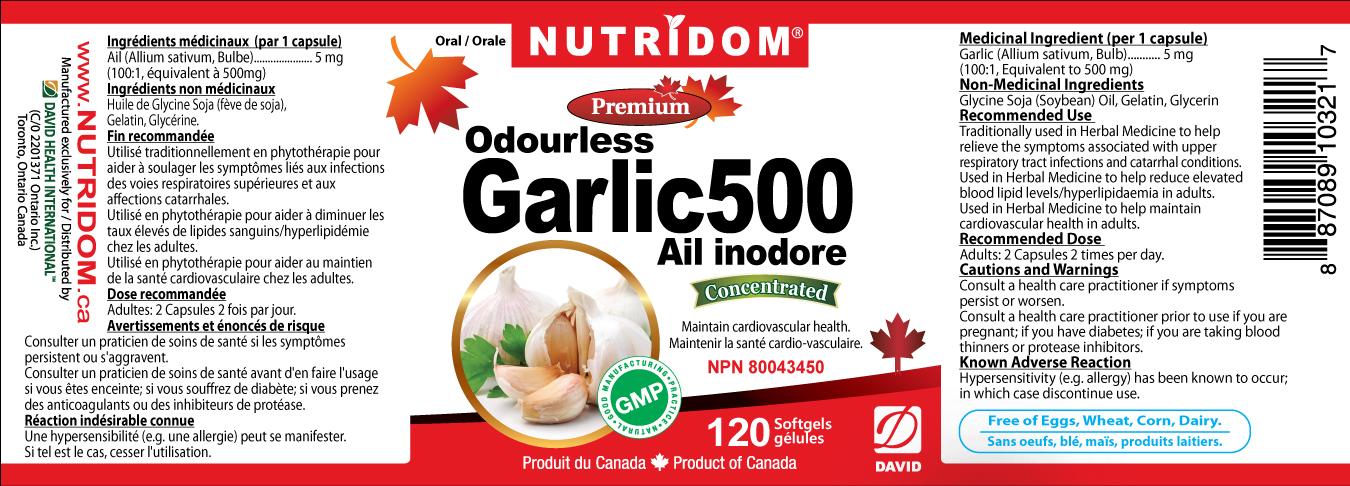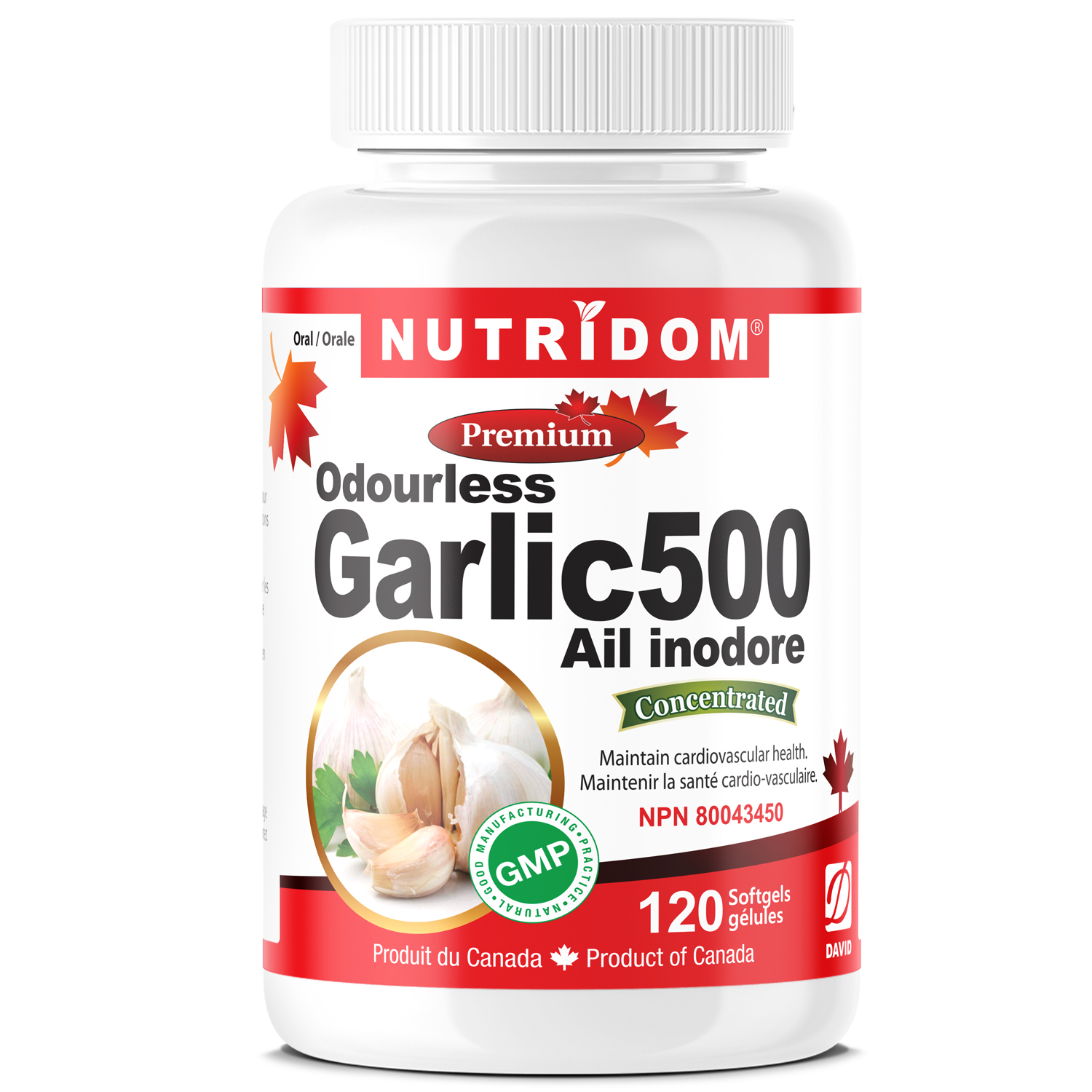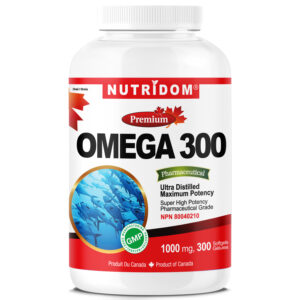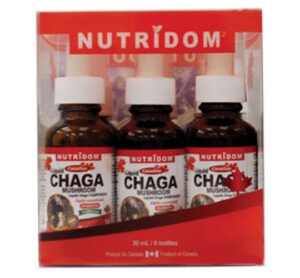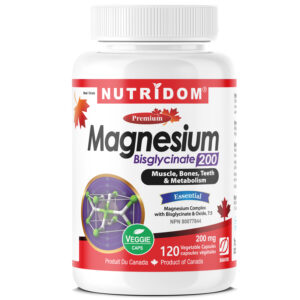Nutridom Odourless Garlic 500 5 mg 120 Softgels
$0.00
– Deodourized formulation- 100% odour free, no aftertaste.
– Equivalent to 500mg of fresh garlic.
– Supports cardiovascular health and helps to reduce high blood
– NPN 80043450
PRODUCT RESEARCH / SAFETY
Garlic is not only an herb used to flavor the culinary dishes of almost every culture; it’s been used to treat or prevent diseases and ailments since ancient history was in the making, and is still used to this day. Traditionally, garlic has been used to relieve symptoms associated with upper respiratory tract infections and bronchial congestions. In a controlled study, people who ate raw garlic at a minimum of twice a week had a 44 percent lower risk of getting lung cancer. When the garlic is crushed, alliin turns into allicin, an antibiotic that fights against fungal and bacterial infection. And it also protects the body against parasites, viruses, and yeast infections. Before the synthetic antibiotics were created, garlic was used as a medicine to treat infections. Garlic contains sulfhydryl, allicin, and sulfur-containing compounds that defend against various diseases.
The garlic extract has been deodorized while maintaining the nutritional value of garlic.
Cautions and Warnings
Consult a health care practitioner if symptoms persist or worsen. Consult a health care practitioner if you are pregnant. Consult a health care practitioner if you have diabetes. Consult a healthcare practitioner if you are taking blood thinners or protease inhibitors.
Known Adverse Reactions
Hypersensitivity (i.e. Allergy) has been known to occur; in which case discontinue use.
REFERENCES
- Blumenthal M, Goldberg A, Brinkmann J, editors. 2000. Herbal Medicine: Expanded Commission E Monographs. Boston (MA): Integrative Medicine Communications.
- Bove M. 2001. An Encyclopedia of Natural Healing for Children & Infants, 2nd edition. Toronto (ON): McGraw-Hill.
- ESCOP 2003: ESCOP Monographs: The Scientific Foundation for Herbal Medicinal Products, 2nd edition. Exeter (UK): European Scientific Cooperative on Phytotherapy and Thieme
- Kojuri J, Vosoughi A, Akrami M. 2007. Effects of anethum graveolens and garlic on lipid profile in hyperlipidemic patients. Lipids in Health and Disease 6(5):1476-1511.
- Kannar D, Wattanapenpaiboon N, Savige G, Wahlqvist M. 2001. Hypocholesterolemic effect of an enteric-coated garlic supplement. Journal of the American College of Nutrition 20(3):225-231.
- McIntyre A. 2005. Herbal Treatment of Children – Western and Ayurvedic Perspectives. Toronto (ON): Elsevier Limited.
- Mills S, Bone K. 2005. The Essential Guide to Herbal Safety. St. Louis (MO): Elsevier Churchill Livingstone.
- Schilcher H. 1997. Phytotherapy in Paediatrics: Handbook for Physicians and Pharmacists. Stuttgart (D): Medpharm Scientific Publishers.
This page is not intended to be a comprehensive review of the medicinal ingredient.
SUPPLEMENT FACTS
